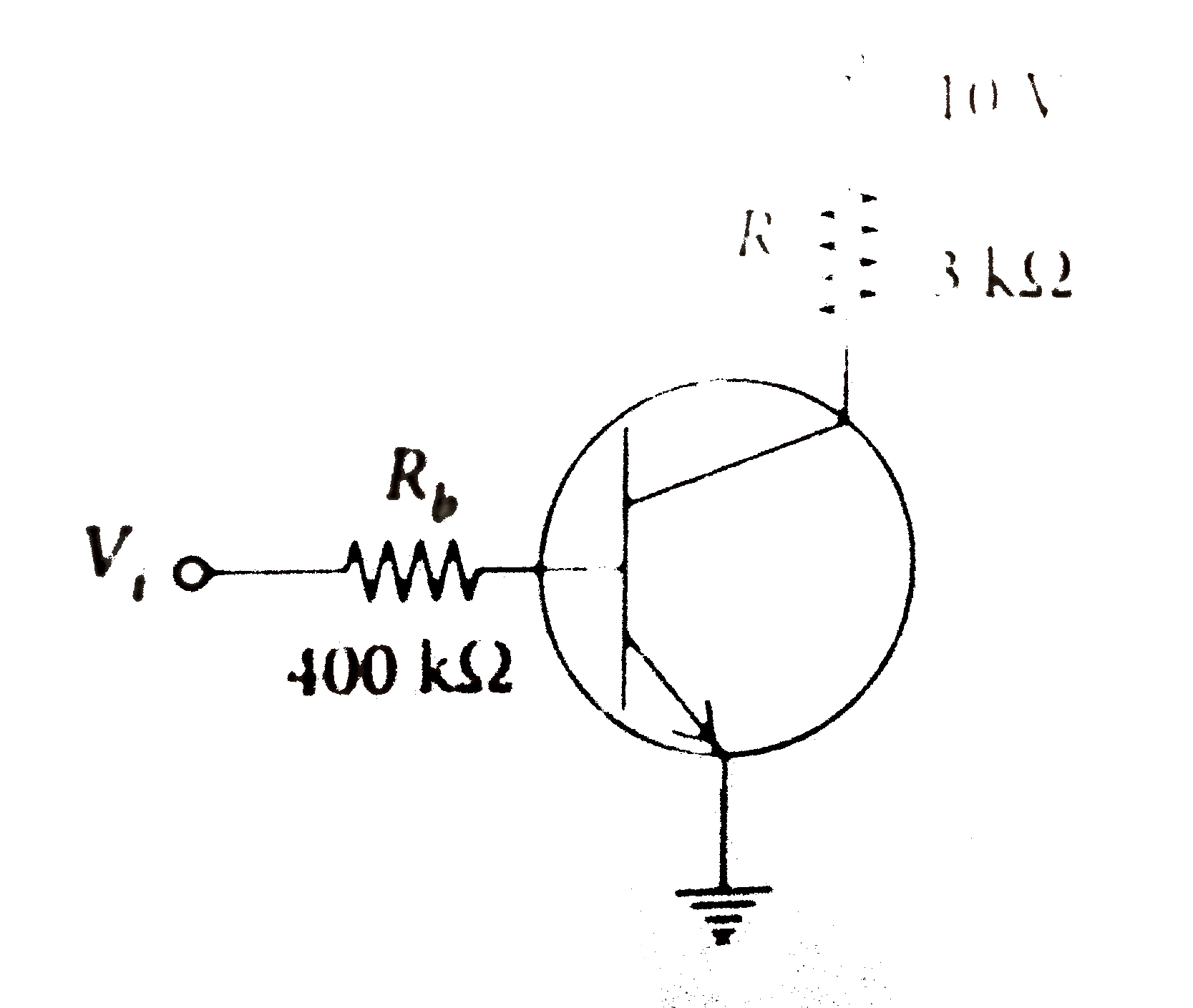An amplifier is represented by the circuit shown in Fig. Here ri is the input resistance of the amplifier and the voltage Vi is appearing across it. This voltage is amplified by a factor AV and appears across the load as voltage V0

An external voltage Vs is applied at the input terminals of the amplifier via series resistance RS. What will be the apparent gain AV(=V0/Vs) of the ampilifier in terms of AV,RS and ri.
Voltage gain, AV=V0Vi=400
or V0=400Vi
If Vs is the voltage of the source, then voltage across the input of the amplifier is
Vi=Vs×ririRs
or Vs=(ri+Rs)Viri
Apparent voltage gain of amplifier,
A′V=V0Vs=400Vi×ri(ri+Rs)Vi=400riri+Rs=400×100100+300=100
Topper's Solved these Questions
- ELECTRONIC DEVICESBOOK - PRADEEPCHAPTER - ELECTRONIC DEVICESEXERCISE - MCQ
5 Videos
- ELECTRONIC DEVICESBOOK - PRADEEPCHAPTER - ELECTRONIC DEVICESEXERCISE - INTEGER TYPE QUESTION
2 Videos
- ELECTRONIC DEVICESBOOK - PRADEEPCHAPTER - ELECTRONIC DEVICESEXERCISE - LONG QUESTION ANSWER
2 Videos
- ELECTROMAGNETIC WAVESBOOK - PRADEEPCHAPTER - ELECTROMAGNETIC WAVESEXERCISE - II Focus multiple choice question
5 Videos
- ELECTROSTATICSBOOK - PRADEEPCHAPTER - ELECTROSTATICSEXERCISE - ASSERTION-REASON TYPE QUESTIONS
2 Videos
Similar Questions
An amplifier is represented by the adjoining circuit . ri is the input resistance of the amplifier and the voltage vi is appearing across it. This voltage is amplified by a factor of Av and apears across the load as voltage v0.
View SolutionIn the circuit shown in Fig.a voltage V is connected across lamp L. What changes would occur at lamp and the voltage V, if the resistance R is reduced in value?

View Solution
Knowledge Check
In the circuit shown in figure, when the input voltage of the base resistance is 10 V, Vbe is zero and Vce is also zero. Then
 Aβ=110BIb=25μACIc=3.33mADboth (A) and (C )
Aβ=110BIb=25μACIc=3.33mADboth (A) and (C )An amplifier has a voltage gain AV=1000. The voltage gain in dB is
A30dBB60dBC3dBD20dBAn input voltage Vi of 0.20V is applied to an operational amplifier connected as shown in the diagram. What is the output voltage V0?
 A0.20VB1.2VC0.80VD8.0V
A0.20VB1.2VC0.80VD8.0V
An amplifier is represented by the circuit shown in Fig. Here ri is the input resistance of the amplifier and the voltage Vi is appearing across it. This voltage is amplified by a factor AV and appears across the load as voltage V0

An external voltage Vs is applied at the input terminals of the amplifier via series resistance RS. What will be the apparent gain AV(=V0/Vs) of the ampilifier in terms of AV,RS and ri.
View SolutionAn amplifier has a voltage gain AV=1000. The voltage gain in dB is
View SolutionAn amplifier has a voltage gain AV=1000. The voltage gain in dB is
View SolutionIn the circuit shown in the figure, the input voltage Vi is 20V,VBE=0 and VCE=0. The values of IB,IC and β are given by:

View SolutionIn a common emitter amplifier the load resistance of the output circuit is 792 times the resistance of the input circuit. If α=0.99. The voltage gain is.
View Solution
